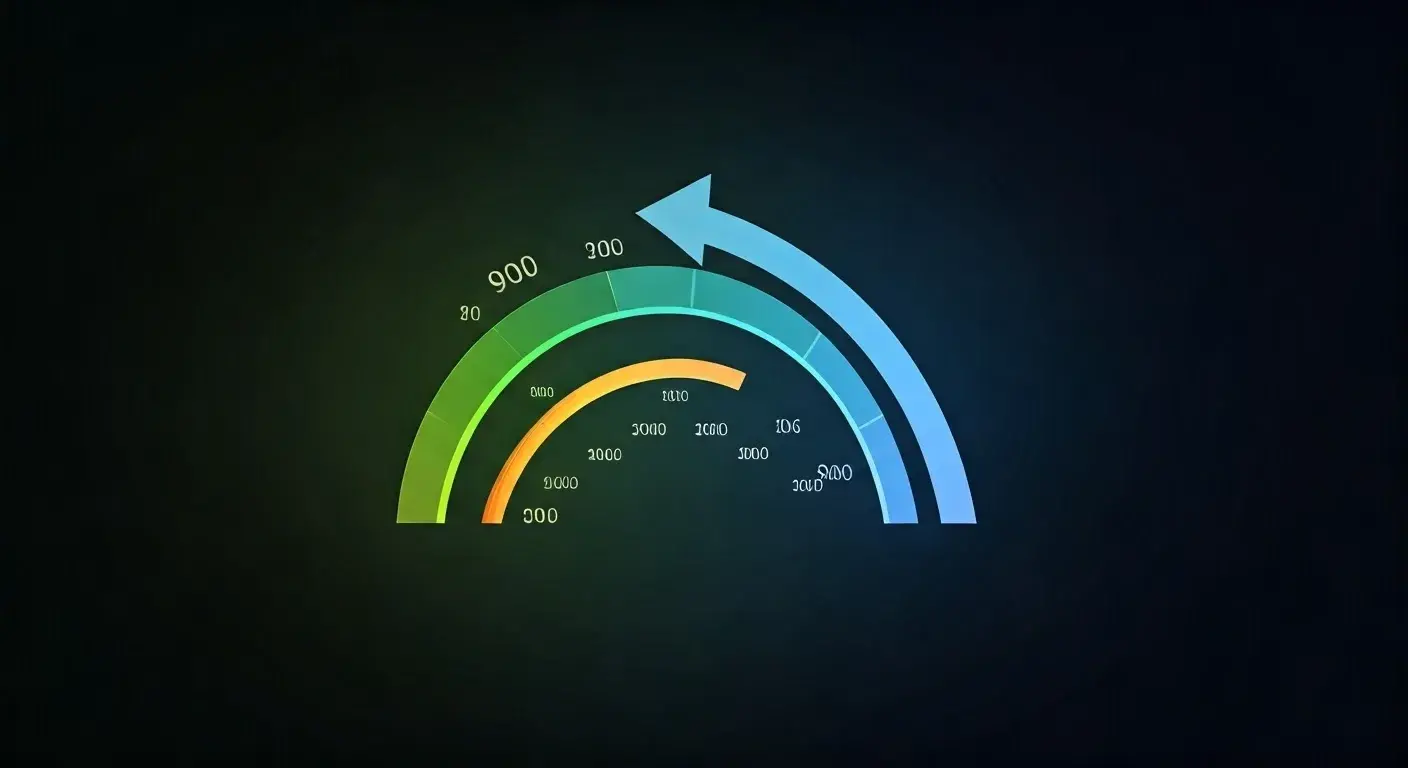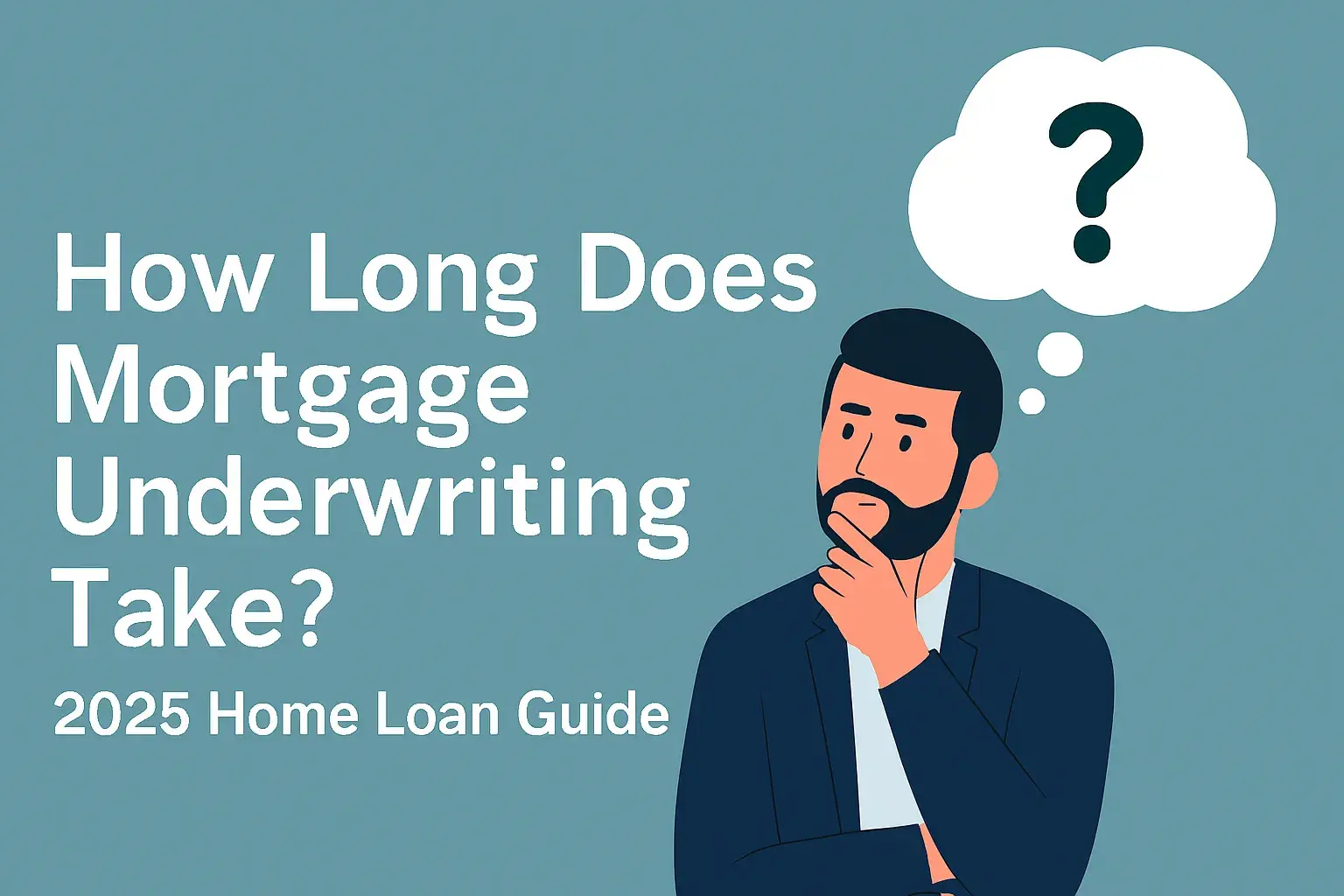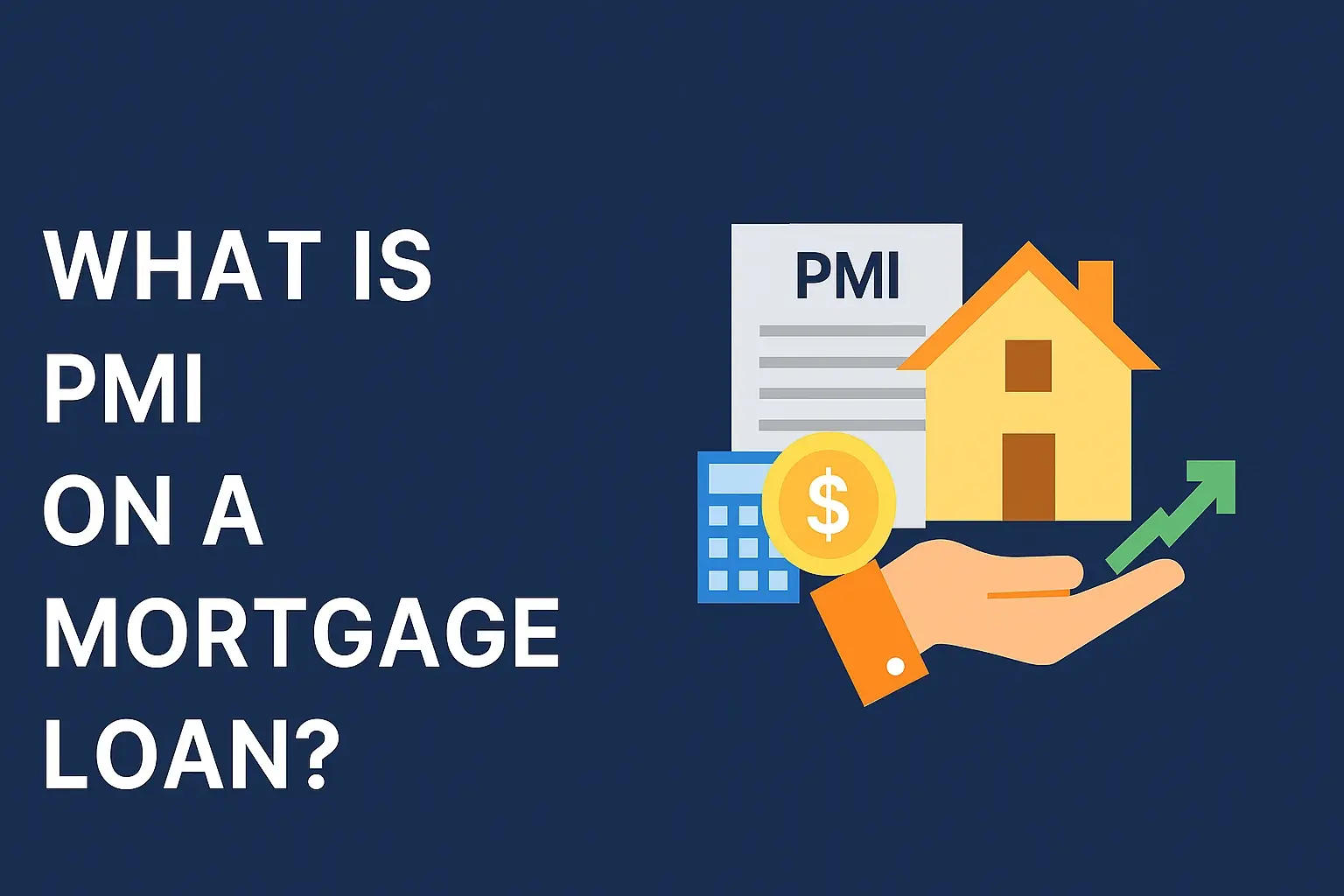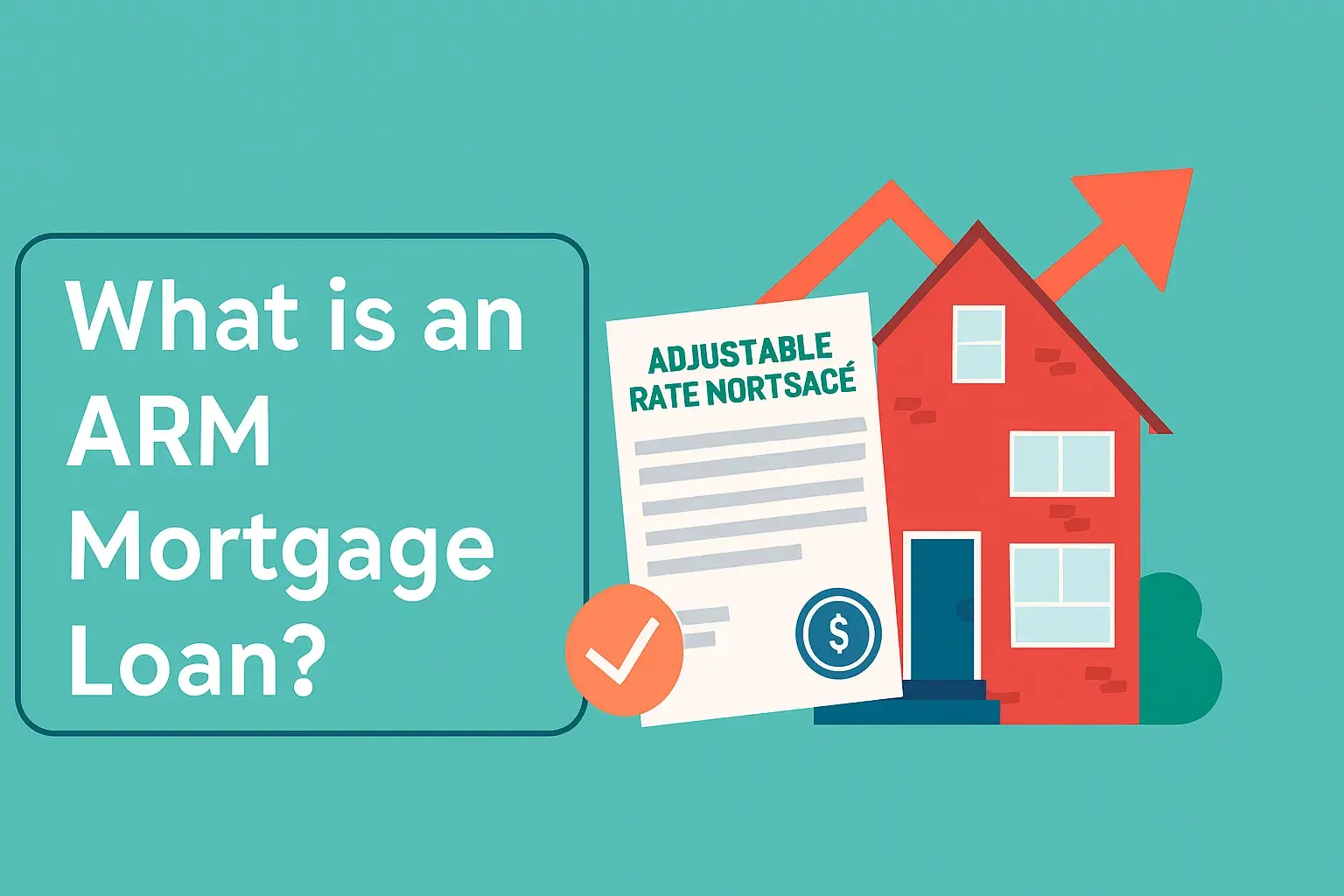-
Posted on: 18 Jul 2024

-
Discover the minimum credit score needed to finance a car in 2025. This guide breaks down the numbers, explains lender requirements, and offers strategies to improve your chances of approval, even with a less-than-perfect credit history.
Understanding Credit Scores and Auto Loans
Embarking on the journey to purchase a vehicle is an exciting prospect for many. However, for a significant portion of car buyers, the primary hurdle isn't finding the perfect car, but securing the financing to make it a reality. At the heart of this financial puzzle lies the credit score. Lenders use your credit score as a primary indicator of your creditworthiness – essentially, how likely you are to repay borrowed money. For auto loans, this score plays a crucial role in determining not only if you'll be approved but also the interest rate you'll be offered, the loan term, and the down payment required.
In the United States, credit scores are typically generated by three major credit bureaus: Equifax, Experian, and TransUnion. These scores are calculated using complex algorithms that analyze your credit history, including payment history, amounts owed, length of credit history, credit mix, and new credit. The most widely used scoring model is the FICO score, which ranges from 300 to 850. Another common model is the VantageScore, which also operates on a similar scale. While the exact methodologies differ slightly, both aim to predict the likelihood of a borrower defaulting on their debts.
When you apply for an auto loan, lenders will pull your credit report and score to assess risk. A higher credit score generally signals to lenders that you are a responsible borrower who consistently meets financial obligations. This translates into more favorable loan terms, such as lower interest rates, which can save you thousands of dollars over the life of the loan. Conversely, a lower credit score suggests a higher risk, which can lead to loan denial, higher interest rates, larger down payment requirements, or even shorter loan terms that result in higher monthly payments.
Understanding your credit score is the first step in navigating the auto loan market. Many consumers are unaware of their current credit standing, which can lead to disappointment or missed opportunities. Fortunately, there are numerous free resources available to check your credit score, such as those offered by credit card companies, financial institutions, and free credit monitoring services. Knowing your score empowers you to make informed decisions and to take proactive steps to improve your creditworthiness before applying for a car loan. This foundational knowledge is essential for anyone looking to finance a vehicle, especially those who may have a lower credit score and are concerned about their eligibility.
What is a Credit Score?
A credit score is a three-digit number that represents your credit risk to lenders. It's a snapshot of your financial behavior, derived from the information in your credit reports. Think of it as a grade for your financial responsibility. The score is calculated based on various factors, with payment history being the most significant. Paying bills on time, keeping credit utilization low, and avoiding excessive credit applications are key to building a good score. Scores generally fall into categories: excellent, very good, good, fair, and poor. Each category is associated with different levels of risk for lenders.
How Credit Scores Affect Auto Loans
The impact of your credit score on an auto loan is profound. It directly influences the interest rate you'll be offered. For instance, a borrower with an excellent credit score (740+) might qualify for an Annual Percentage Rate (APR) as low as 3-5%, while someone with a poor score (below 600) could face APRs of 15% or even higher. This difference in interest can mean paying hundreds or thousands of dollars more in interest over the loan's term. Beyond interest rates, a low score might necessitate a larger down payment, a co-signer, or even lead to outright denial of the loan. Therefore, understanding your score and its implications is paramount before you even step onto a dealership lot.
The Magic Number: What is the Lowest Credit Score to Buy a Car?
The question, "What is the lowest credit score to buy a car?" is one that many prospective car buyers grapple with. The honest answer is that there isn't a single, universally defined "magic number." The minimum credit score required to get approved for an auto loan varies significantly depending on the lender, the type of dealership, the specific loan product, and even current economic conditions. However, we can provide general benchmarks and insights based on industry standards and 2025 lending practices.
Generally, lenders categorize borrowers into different risk tiers. For auto loans, these tiers often look something like this:
- Excellent Credit: 740+
- Good Credit: 670-739
- Fair Credit: 580-669
- Poor Credit: Below 580
While some prime lenders might set their minimums around 620-660 for approval, it's not uncommon for borrowers with scores as low as 500 to 580 to secure financing, particularly through subprime lenders or dealership financing departments. However, it's crucial to understand that approval at these lower score ranges often comes with significant drawbacks. The interest rates will be considerably higher, and the loan terms may be less favorable. For example, a borrower with a score below 580 might be looking at APRs in the double digits, significantly increasing the total cost of the vehicle.
It's also important to differentiate between the lowest score to *buy* a car and the lowest score to get *approved* for a loan. You might technically be approved with a very low score, but the terms could be so unfavorable that buying the car becomes financially unfeasible or even detrimental. Some dealerships specialize in working with buyers who have lower credit scores, often referred to as "buy here, pay here" lots. While these can be an option, they typically come with the highest interest rates and stricter repayment terms. Therefore, while the absolute lowest score might hover around the 500-550 mark for some subprime options, aiming for a score above 600 will significantly broaden your options and lead to much better loan terms in 2025.
The landscape of auto lending in 2025 continues to evolve. Lenders are constantly assessing risk, and while credit scores remain a primary factor, they are increasingly looking at the entire financial picture. This means that even with a score in the lower range, demonstrating stability in other areas can sometimes help your case. However, for the purpose of answering the direct question, if you have a credit score between 500 and 580, you are entering the territory where securing a car loan becomes challenging but not entirely impossible, especially with specialized lenders. Anything below 500 makes it exceptionally difficult to get approved through traditional channels.
Minimum Scores by Lender Type
Understanding that different institutions have different appetites for risk is key. Here's a general breakdown of minimum credit score expectations for various types of auto lenders in 2025:
- Prime Lenders (Banks, Credit Unions): Typically require scores of 660 and above for their best rates. Some may go down to 620 for approval, but with higher rates.
- Subprime Lenders: These lenders specialize in working with borrowers who have lower credit scores. They may approve applicants with scores as low as 500-580, but expect significantly higher interest rates and fees.
- Dealership Financing (In-House): Dealerships often have relationships with both prime and subprime lenders. They can sometimes secure approvals for scores in the 550-600 range, but their own financing arms ("buy here, pay here") might accept even lower scores, albeit with very high APRs.
Impact of Score on Loan Approval
A credit score is not just a number; it's a gatekeeper. For scores above 700, approval is generally straightforward, and the borrower can expect competitive rates. As scores dip below 650, approval becomes less certain, and rates begin to climb. In the 580-650 range, approval is possible but often requires a strong overall application (stable income, low debt-to-income ratio) and will likely come with a higher APR. Below 580, the chances of approval through traditional lenders diminish rapidly, pushing buyers towards subprime lenders or dealership financing, which carry their own set of risks and costs.
Credit Score Tiers and Their Impact on Auto Loan Terms
Your credit score doesn't just determine whether you get approved for a car loan; it profoundly influences the terms of that loan. Lenders use your credit score to assess the risk associated with lending you money. The higher your score, the lower the perceived risk, and the more favorable the terms you'll receive. Conversely, a lower score signals higher risk, leading to less attractive loan conditions. In 2025, understanding these tiers is crucial for budgeting and making an informed financial decision.
Let's break down how different credit score tiers typically translate into auto loan terms:
Excellent Credit (740+)
Interest Rates: Borrowers in this tier can expect the lowest interest rates available, often in the range of 3% to 5% APR. This is because lenders see them as highly reliable borrowers.
Loan Approval: Approval is almost guaranteed for qualified applicants. Lenders will compete to offer the best terms.
Down Payment: Often, no down payment is required, or a very small one might be suggested for certain vehicle types.
Loan Terms: Access to the longest loan terms (up to 72 or even 84 months), which can lower monthly payments, though extending the loan term increases the total interest paid over time.
Example: A buyer with a 780 FICO score might secure a 60-month loan for a $30,000 car at 4.5% APR, resulting in monthly payments of approximately $566. Over the life of the loan, they would pay around $3,960 in interest.
Good Credit (670-739)
Interest Rates: Still very competitive, typically ranging from 5% to 8% APR. These rates are excellent and offer significant savings compared to lower tiers.
Loan Approval: High likelihood of approval. Lenders view these borrowers as reliable.
Down Payment: Usually not required, though a small down payment might be recommended for higher-priced vehicles.
Loan Terms: Access to standard loan terms, often up to 72 months, providing flexibility in monthly payments.
Example: A buyer with a 700 FICO score might get the same $30,000 car financed over 60 months at 6.5% APR. Monthly payments would be around $596, with total interest of approximately $5,760.
Fair Credit (580-669)
Interest Rates: Rates begin to increase significantly, often ranging from 9% to 15% APR. This is where the cost of borrowing starts to become substantial.
Loan Approval: Approval is possible but may require a stronger overall application (stable income, low debt-to-income ratio) and potentially a co-signer. Lenders are more cautious.
Down Payment: A down payment is often required, typically ranging from 10% to 20% of the vehicle's price, to mitigate lender risk.
Loan Terms: Loan terms might be shorter (e.g., 48-60 months), leading to higher monthly payments. Lenders may also be hesitant to finance the full price of the vehicle.
Example: A buyer with a 620 FICO score might face a 60-month loan for $30,000 at 12% APR. Monthly payments would be around $665, with total interest of approximately $9,900. If a 15% down payment ($4,500) is required, they'd finance $25,500, leading to monthly payments of about $565 at 12% APR, with total interest around $8,400.
Poor Credit (Below 580)
Interest Rates: Expect very high interest rates, often ranging from 15% to 25% APR or even higher. These rates make the loan extremely expensive.
Loan Approval: Approval is difficult through traditional lenders and often requires a co-signer with good credit. Subprime lenders and "buy here, pay here" dealerships are the primary options.
Down Payment: A substantial down payment is almost always required, sometimes 20% or more, to offset the high risk.
Loan Terms: Loan terms are typically shorter (e.g., 36-48 months), resulting in very high monthly payments. Lenders may also limit the amount they are willing to finance.
Example: A buyer with a 550 FICO score seeking a $30,000 car might need a 20% down payment ($6,000), financing $24,000. A subprime lender might offer a 48-month loan at 20% APR. Monthly payments would be around $716, with total interest of approximately $10,368. This is significantly more expensive than for borrowers with better credit.
It's clear from these examples that your credit score is a critical determinant of the total cost of your vehicle. Even a few percentage points difference in APR can translate into thousands of dollars over the loan's life. This highlights the importance of checking your credit score, understanding your tier, and taking steps to improve it if necessary before applying for an auto loan in 2025.
Factors Beyond Your Credit Score That Lenders Consider
While your credit score is undoubtedly the most significant factor in determining your eligibility and the terms of an auto loan, it's not the only element lenders evaluate. In 2025, lenders are increasingly taking a holistic view of a borrower's financial situation to assess risk. Even if your credit score is on the lower side, demonstrating strength in other areas can significantly improve your chances of approval and potentially secure more favorable terms. Conversely, a high credit score doesn't automatically guarantee approval if other red flags are present.
Here are the key factors beyond your credit score that lenders scrutinize:
Income and Employment Stability
Verification: Lenders need to be confident that you have a stable and sufficient income to repay the loan. They will typically ask for proof of income, such as recent pay stubs, tax returns, or bank statements. Some may also verify your employment by contacting your employer.
Debt-to-Income Ratio (DTI): This is a crucial metric. Your DTI is calculated by dividing your total monthly debt payments (including the potential new car loan payment, mortgage/rent, student loans, credit card minimums, etc.) by your gross monthly income. Lenders generally prefer a DTI of 43% or lower, but for auto loans, they often look for a ratio below 36% for the entire debt load, and specifically for the auto loan payment to be no more than 10-15% of your gross monthly income. A lower DTI indicates you have more disposable income available to handle loan payments.
Job Tenure: Lenders favor borrowers who have been with their current employer for a reasonable period, typically at least six months to a year. Frequent job changes can be seen as a sign of instability.
Loan-to-Value Ratio (LTV)
Definition: The LTV ratio compares the amount of money you're borrowing to the value of the vehicle you're purchasing. It's calculated by dividing the loan amount by the vehicle's market value (often determined by the dealer's selling price or a standard industry guide like Kelley Blue Book). For example, if you're borrowing $20,000 for a car valued at $25,000, your LTV is 80%.
Impact: Lenders prefer lower LTV ratios because they reduce their risk. If you default, they are more likely to recoup their losses by selling the car. High LTVs (above 100%, meaning you're borrowing more than the car is worth, often due to rolling in negative equity from a previous loan) are generally viewed as very risky and may require a larger down payment or result in loan denial.
Down Payment
Significance: A down payment is essentially your "skin in the game." It reduces the amount you need to borrow, thereby lowering the LTV ratio and demonstrating your commitment to the purchase. A larger down payment can significantly improve your chances of approval, especially with a lower credit score, and can also help you secure a lower interest rate.
Amount: While some lenders might offer 0% down payment options for borrowers with excellent credit, those with fair or poor credit will often be required to put down anywhere from 10% to 25% or more of the vehicle's price.
Vehicle Age and Mileage
Depreciation: Lenders are concerned about the vehicle's depreciation rate. Older cars with higher mileage lose value faster, increasing the risk for the lender. Many lenders have restrictions on the maximum age and mileage of vehicles they will finance. For instance, they might not finance cars older than 7-10 years or with over 100,000 miles.
Collateral Value: The vehicle serves as collateral for the loan. If its value depreciates too quickly or it's considered too old, it may not be sufficient collateral for the loan amount, leading to denial or a requirement for a larger down payment.
Payment History on Existing Debts
Beyond Scores: While your credit score summarizes your payment history, lenders may still look at the specifics of your credit report. Late payments on other loans (especially auto loans), collections, repossessions, or bankruptcies within the last few years will be significant red flags, even if your score has improved.
Consistency: A history of consistent, on-time payments on other credit accounts (credit cards, mortgages, student loans) can help offset a slightly lower credit score.
Type of Vehicle
Demand and Depreciation: Lenders might be more hesitant to finance certain types of vehicles, such as luxury sports cars or heavily modified vehicles, due to their higher depreciation rates and potentially niche markets. More common, practical vehicles are generally viewed as safer collateral.
By understanding these additional factors, you can better prepare your application and present yourself as a less risky borrower to lenders in 2025, even if your credit score isn't stellar. Focusing on a stable income, managing your debt-to-income ratio, and preparing a down payment can make a significant difference.
Improving Your Chances of Getting Approved with Lower Credit
If your credit score is below the ideal range, the prospect of buying a car can seem daunting. However, it's not an insurmountable obstacle. With strategic planning and effort, you can significantly improve your chances of getting approved for an auto loan in 2025, even with a lower credit score. The key is to understand what lenders are looking for and to take proactive steps to strengthen your application.
1. Check Your Credit Reports and Scores
Know Your Starting Point: Before anything else, obtain copies of your credit reports from Equifax, Experian, and TransUnion. You're entitled to a free report from each annually via AnnualCreditReport.com. Also, check your credit scores. Many credit card companies and financial apps offer free credit score monitoring.
Identify Errors: Carefully review your reports for any inaccuracies, such as accounts that aren't yours, incorrect late payment markers, or wrongly reported balances. Dispute any errors immediately, as correcting them can boost your score.
2. Improve Your Credit Score
While significant improvements take time, even small gains can make a difference. Focus on the factors that most impact your score:
- Pay Bills On Time: Payment history is the most critical factor. Ensure all your bills – credit cards, loans, utilities – are paid on or before their due dates. Even one late payment can significantly harm your score.
- Reduce Credit Utilization: Aim to keep your credit card balances below 30% of your credit limit, and ideally below 10%. High utilization signals to lenders that you are heavily reliant on credit.
- Avoid Opening New Credit Accounts Unnecessarily: Each hard inquiry for new credit can slightly lower your score. Only apply for credit when you truly need it.
- Settle Outstanding Debts: If you have past-due accounts or collections, try to settle them. While the negative mark may remain for a while, settling shows a commitment to resolving past issues.
3. Save for a Larger Down Payment
Mitigate Risk: A substantial down payment is one of the most effective ways to compensate for a lower credit score. It reduces the amount you need to borrow, lowers the loan-to-value (LTV) ratio, and demonstrates your financial commitment. Lenders see this as a sign of lower risk.
Target Amount: Aim for at least 10-20% of the vehicle's price. The more you can put down, the better your chances of approval and the more favorable your loan terms are likely to be.
4. Consider a Co-signer
Adding Strength: If you have a trusted friend or family member with excellent credit who is willing to co-sign your loan, this can significantly boost your approval odds. A co-signer essentially agrees to be responsible for the loan payments if you are unable to make them.
Responsibilities: Ensure your co-signer understands the risks involved. Their credit score will be affected by your payment behavior, and they will be legally obligated to pay if you default.
5. Shop Around for Lenders
Don't Settle for the First Offer: Dealerships often have preferred lenders, but it's crucial to explore your options. Get pre-approved by multiple lenders before you visit a dealership. This includes:
- Your Current Bank or Credit Union: They already know your financial history and may offer preferential terms.
- Online Lenders: Many online lenders specialize in auto loans and may have more flexible criteria than traditional banks.
- Subprime Lenders: If your credit is particularly low, research reputable subprime lenders who work with buyers in your credit range. Be prepared for higher interest rates.
Pre-approval: Getting pre-approved gives you a clear understanding of the interest rate and loan amount you qualify for, empowering you to negotiate better terms at the dealership.
6. Focus on More Affordable Vehicles
Lower Loan Amount: The less you need to borrow, the lower the risk for the lender. Consider purchasing a less expensive vehicle, a used car with a good maintenance history, or a model known for its reliability and lower insurance costs.
Total Cost of Ownership: Factor in not just the loan payment but also insurance, fuel, and maintenance costs. A more affordable car often means lower overall expenses.
7. Be Prepared to Negotiate
Know Your Numbers: Once you have a pre-approval, you have a benchmark. Use this to negotiate the interest rate and loan terms with the dealership's finance department. If they can't beat your pre-approved offer, you can walk away and use your pre-approval.
Focus on APR: Always negotiate the Annual Percentage Rate (APR), not just the monthly payment. A lower APR saves you more money over the life of the loan.
By implementing these strategies, you can navigate the auto loan process with greater confidence, even if your credit score isn't perfect. Patience, preparation, and a clear understanding of your financial situation are your greatest assets.
Navigating Different Dealerships and Financing Options
When you're looking to buy a car with a less-than-ideal credit score, the type of dealership and financing option you choose can make a significant difference. Not all dealerships and lenders operate under the same rules or have the same risk tolerance. Understanding the landscape of auto financing in 2025 will help you find the best path forward.
Franchise Dealerships (New Car Dealerships)
Pros: These dealerships, representing major manufacturers like Ford, Toyota, Honda, etc., typically have strong relationships with prime lenders (banks, credit unions) and manufacturer financing arms. They often have the newest models, the latest incentives, and a wide range of financing options. If you have decent credit (660+), this is usually the best place to start for competitive rates.
Cons for Lower Credit: If your credit score is below 600, securing approval through their prime lenders can be challenging. While they do work with subprime lenders, the rates and terms might still be less favorable than what you could find elsewhere. They may also push for higher down payments.
Strategy: Get pre-approved by an external lender (your bank, credit union, or online lender) before visiting. This gives you leverage. If the dealership can't match or beat your pre-approved rate, you can use your existing offer.
Independent Used Car Dealerships
Pros: These dealerships often offer a wider range of vehicle prices and may have more flexibility in negotiating prices. Some independent dealers work with a broader network of lenders, including subprime options.
Cons for Lower Credit: The quality and reliability of vehicles can vary significantly. Financing options might be limited, and interest rates could be higher if they rely heavily on subprime lenders. It's crucial to thoroughly research the dealership's reputation and financing partners.
Strategy: Always get a vehicle history report (like CarFax or AutoCheck) and have a trusted mechanic inspect any vehicle before purchasing. Be wary of dealerships that seem overly eager to finance you without a thorough credit check.
"Buy Here, Pay Here" (BHPH) Dealerships
Pros: These dealerships are specifically designed for buyers with very low credit scores or no credit history. They act as both the seller and the lender, meaning they finance the loan directly through their own company. Approval is often based more on your ability to pay (proof of income, down payment) than your credit score. This can be the last resort for those who can't get approved anywhere else.
Cons for Lower Credit: This is where you'll find the highest interest rates (often 20% APR or more), shorter loan terms, and stricter repayment schedules (often weekly or bi-weekly payments). The vehicles sold are typically older and may have higher mileage. If you miss a payment, repossession can be swift. They may also use GPS tracking devices on vehicles to facilitate repossession.
Strategy: BHPH should be considered only if all other options have been exhausted. Be prepared for the high cost of borrowing. Ensure you understand every term of the contract and can realistically meet the payment schedule. Aim to pay off the loan as quickly as possible to minimize interest charges.
Manufacturer Financing (Captive Lenders)
Examples: Ford Credit, Toyota Financial Services, GM Financial, etc.
Pros: These lenders often offer special low-interest rates or incentives (like 0% APR) on new vehicles, but these deals are almost exclusively for buyers with excellent credit (typically 700+). They are very competitive when available.
Cons for Lower Credit: If your credit score is below the prime threshold, you will not qualify for these special offers. They are generally not an option for subprime borrowers.
Strategy: Check manufacturer websites for current incentives, but understand that these are usually reserved for the most creditworthy customers.
Banks and Credit Unions
Pros: These are traditional lenders that offer auto loans. Credit unions, in particular, are often known for offering competitive rates and more personalized service, especially to their members. They may have slightly more flexible criteria than large national banks.
Cons for Lower Credit: Like franchise dealerships, their prime lending arms will have minimum credit score requirements (often 620-660). However, some may have separate subprime divisions or work with specific subprime partners.
Strategy: If you're a member of a credit union, start there. Even if you don't qualify for their best rates, they might offer a reasonable option. Always compare their offers to other lenders.
Online Lenders
Examples: LendingTree, Capital One Auto Finance, Carvana, Vroom, etc.
Pros: Online lenders offer convenience and speed. You can often get pre-approved within minutes. Many have specialized programs for borrowers with fair or even lower credit scores. They can be a great source for comparing multiple offers quickly.
Cons for Lower Credit: While some online lenders cater to subprime borrowers, their rates can still be high. It's essential to read reviews and understand their lending criteria.
Strategy: Use online platforms to get pre-approved from multiple lenders simultaneously. This allows for efficient comparison shopping and can help you find the best available rate for your credit profile.
When choosing a dealership and financing option in 2025, remember that your credit score is just one piece of the puzzle. A strong down payment, stable income, and a willingness to shop around can open doors even when your credit history presents challenges.
Preparing for the Auto Loan Application Process
Securing an auto loan, especially with a lower credit score, requires more than just showing up at a dealership. Thorough preparation is key to increasing your chances of approval and getting the best possible terms. By gathering the necessary documents and understanding what lenders look for, you can navigate the application process smoothly and confidently in 2025.
1. Gather Essential Documentation
Lenders will need to verify your identity, income, and residency. Having these documents ready will expedite the process:
- Proof of Identity: A valid, government-issued photo ID (driver's license, state ID, passport).
- Proof of Income:
- Recent pay stubs (usually the last two to three).
- Recent tax returns (if self-employed or if required by the lender, usually the last two years).
- Bank statements (showing direct deposits of your salary, typically the last two to three months).
- Proof of Residence: Utility bills, lease agreements, or mortgage statements showing your current address.
- Proof of Insurance: Lenders will require proof of active auto insurance before finalizing the loan.
- Employment Verification: Some lenders may contact your employer to confirm your job title and length of employment.
- Information for Co-signer (if applicable): If you have a co-signer, they will need to provide all the same documentation as you.
2. Determine Your Budget and Affordability
Before you even look at cars, figure out what you can realistically afford. This involves more than just the monthly payment:
- Calculate Total Monthly Payments: Add up all your current fixed monthly expenses (rent/mortgage, utilities, existing loan payments, insurance, etc.).
- Estimate New Loan Payment: Use online auto loan calculators to estimate monthly payments based on potential loan amounts, interest rates (be conservative with your estimate if your credit is low), and loan terms.
- Factor in Other Costs: Don't forget insurance premiums (which can be higher for financed vehicles), fuel, maintenance, registration, and taxes.
- Down Payment: Determine how much you can comfortably put down. This will reduce your loan amount and monthly payments.
A good rule of thumb is that your total monthly debt, including the new car payment, should not exceed 43% of your gross monthly income (Debt-to-Income Ratio or DTI). For the car loan specifically, aim for the payment to be no more than 10-15% of your gross monthly income.
3. Get Pre-Approved for a Loan
This is arguably the most critical step, especially for those with lower credit scores. Pre-approval is a conditional commitment from a lender to loan you a specific amount of money at a certain interest rate. It's like having cash in hand.
Benefits of Pre-Approval:
- Know Your Budget: You know exactly how much you can spend on a car.
- Stronger Negotiating Position: You can negotiate the car's price without the pressure of also negotiating financing. You can tell the dealership, "I have financing already."
- Compare Offers: Shop around with multiple lenders (banks, credit unions, online lenders) to find the best interest rate and terms.
- Identify Potential Issues: If you're denied pre-approval, you'll know there's an issue to address before you waste time at a dealership.
Where to Get Pre-Approved:
- Your current bank or credit union
- Online lenders specializing in auto loans
- Reputable subprime lenders (if your credit is very low)
4. Research Vehicles and Their Value
Know the market value of the cars you're interested in. Use resources like Kelley Blue Book (KBB), Edmunds, and NADA Guides to understand:
- Fair Market Value: What others are paying for similar vehicles in your area.
- Resale Value: How well the car holds its value.
- Reliability Ratings: Look for cars known for dependability, which can lead to lower maintenance costs and insurance premiums.
This knowledge will prevent you from overpaying and help you negotiate effectively.
5. Understand Your Credit Report and Score
As mentioned earlier, know your credit score and review your credit reports for errors. If your score is low, understand why (e.g., late payments, high utilization) and focus on improving it before applying, or be prepared for the consequences (higher rates, larger down payment).
6. Be Prepared for Dealership Financing Tactics
Dealerships often have finance managers whose job is to sell you financing. They may try to:
- Focus on Monthly Payments: They might extend the loan term to lower the monthly payment, but this significantly increases the total interest paid. Always focus on the APR and the total cost of the loan.
- Add Extras: They might try to sell you extended warranties, GAP insurance, or other add-ons at inflated prices. Carefully consider if you need these and if the price is fair.
- "Yo-Yo" Financing: Be cautious of deals where you drive off the lot but are later told the financing fell through and you need to renegotiate with less favorable terms. Ensure the financing is fully approved before driving away.
By taking these preparatory steps, you'll be in a much stronger position to secure an auto loan that fits your budget and financial goals, even with a less-than-perfect credit history in 2025.
What Happens If You Can't Get Approved for a Car Loan?
Facing rejection for an auto loan can be disheartening, especially when you desperately need reliable transportation. However, a loan denial isn't the end of the road. In 2025, there are several alternative paths and strategies to consider if you can't get approved through traditional or even subprime lenders.
1. Understand the Reason for Denial
Lenders are required by law to provide you with an adverse action notice if they deny your application. This notice must state the specific reasons for the denial. Common reasons include:
- Low credit score
- High debt-to-income ratio
- Insufficient income
- Lack of credit history (thin file)
- Too many recent credit inquiries
- Negative information on your credit report (e.g., bankruptcies, collections, repossessions)
Understanding the exact reason is crucial for addressing the issue and improving your chances for future applications.
2. Address the Underlying Issues
Once you know why you were denied, you can take targeted steps:
- Improve Your Credit Score: This is the most common reason for denial. Focus on paying bills on time, reducing credit card balances, and disputing any errors on your credit report. This takes time, but it's the most sustainable solution.
- Reduce Debt: Work on paying down existing debts to lower your DTI ratio.
- Increase Income: Explore options for a side hustle, ask for a raise, or seek a higher-paying job if possible.
- Build Credit History: If you have a thin credit file, consider a secured credit card or becoming an authorized user on a responsible person's account.
3. Explore Alternative Financing Options
If traditional and subprime lenders have turned you down, consider these alternatives:
- "Buy Here, Pay Here" (BHPH) Dealerships: As discussed earlier, these dealerships finance loans directly. While they come with high costs, they are often the last resort for those with extremely poor credit.
- Leasing with a Co-signer: While leasing also involves credit checks, sometimes a co-signer with good credit can help you qualify for a lease. However, leasing has its own set of restrictions and costs.
- Peer-to-Peer (P2P) Lending Platforms: Some P2P platforms might have more flexible criteria, but interest rates can still be high.
4. Seek a Co-signer or Co-borrower
If you have a family member or close friend with good credit who trusts you, they might be willing to co-sign your loan application. A co-signer essentially guarantees the loan, making it less risky for the lender. Be aware that if you fail to make payments, your co-signer's credit will be negatively impacted, and they will be legally obligated to pay.
5. Save for a Larger Down Payment or Purchase a Cheaper Vehicle
Increase Down Payment: If you can significantly increase your down payment, it reduces the lender's risk and might make them reconsider. Even a few thousand extra dollars can make a difference.
Buy a Cheaper Car: Re-evaluate your needs and consider purchasing a less expensive vehicle, perhaps an older used car that you can pay for in cash or with a much smaller loan. Focus on reliability and affordability over features.
6. Consider Alternatives to Car Ownership
Depending on your location and lifestyle, you might be able to manage without owning a car immediately:
- Public Transportation: Utilize buses, trains, and subways if available in your area.
- Ride-Sharing Services: Services like Uber and Lyft can be used for occasional trips, though they can become expensive for daily commuting.
- Car-Sharing Services: Services like Zipcar allow you to rent cars by the hour or day for specific needs.
- Biking or Walking: For shorter distances, these are cost-effective and healthy options.
7. Reapply Later
If your loan was denied due to credit-related issues, give yourself time to work on improving your credit. Once you've made progress, you can reapply. It's often recommended to wait at least 3-6 months after a denial before reapplying to allow time for credit improvements to reflect and to avoid too many recent inquiries.
While a car loan denial can be frustrating, it's an opportunity to reassess your financial situation and make necessary improvements. By understanding the reasons for denial and exploring alternative solutions, you can eventually achieve your goal of car ownership.
Conclusion
Navigating the process of buying a car with a less-than-ideal credit score in 2025 can feel complex, but it's far from impossible. The crucial takeaway is that there isn't a single, definitive "lowest credit score to buy a car." While scores as low as 500-580 might qualify for some subprime loans, these often come with prohibitively high interest rates and unfavorable terms. For more accessible and affordable financing, aiming for a score above 600 significantly broadens your options and leads to better loan conditions.
Remember that your credit score is just one factor lenders consider. Demonstrating a stable income, maintaining a low debt-to-income ratio, and preparing a substantial down payment can powerfully offset a lower score. By thoroughly preparing your documentation, getting pre-approved by multiple lenders before visiting a dealership, and researching vehicle values, you empower yourself to negotiate effectively and secure a loan that fits your budget.
If you face loan denials, don't despair. Understand the reasons, work on improving your credit, and explore alternatives like "buy here, pay here" dealerships (as a last resort), seeking a co-signer, or saving for a larger down payment. Ultimately, patience, diligent preparation, and a clear understanding of your financial standing are your greatest assets in achieving car ownership.










